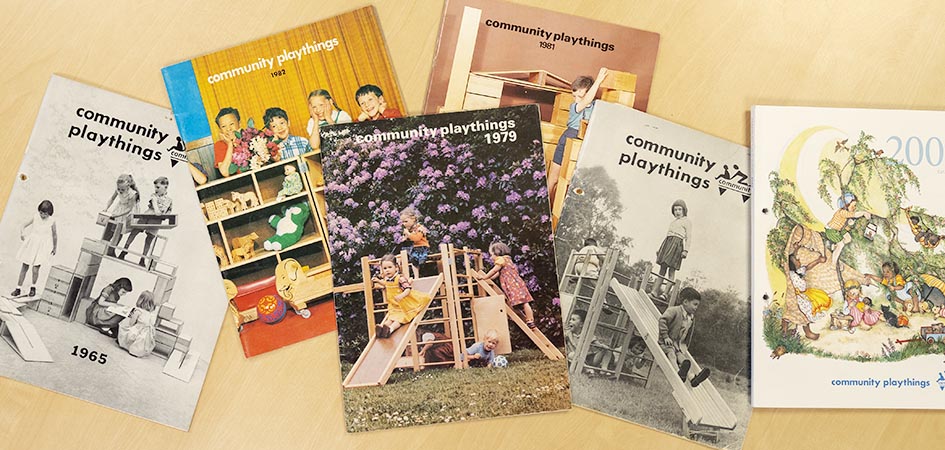
History
Around 1947, in the wake of the Second World War, a group of young families who were discontented with ordinary life began a community together in rural Georgia, USA. As a means of income they sold wooden toys and blocks similar to those they had been making for their own children. Their success was limited, until they were given dimensions for Carolyn Pratt’s unit blocks, and consequently received a large order for them from a New York department store. By 1948 the business had chosen the name Community Playthings, and was mailing out its own catalogue.
In 1961 Community Playthings decided to expand, and formed a UK branch in Buckinghamshire. In a new country we encountered new challenges – we tried various items and experimented with some large metal structures. We sold to anyone, including shops and specialist toyshops, however the most rewarding was selling directly to schools. Our company produced a catalogue each year, and slowly our place in the market became more established.
Our community and workshop eventually moved to East Sussex, where we are today, alongside our newer site in Kent. As the importance of learning through play has become more accepted and promoted in the UK, so Community Playthings has become increasingly popular. The advent of Sure Start funding in the late 1990s was a time of growth for us.
Over the years we’ve come to realize the importance of real, solid wood – its versatility, beauty, and especially its calming, healthful effects on children. The large metal structures are a thing of the past, and we see the value in fabrics and some plastics. We’ve also developed lasting relationships with a number of childcare leaders, and appreciate their help in guiding our understanding of children and of best practice.
Much has changed since a few young dads in the backwoods of Georgia, USA started cutting wooden blocks for their children. But in all those years there’s one basic that has never changed. As one of our founders said: “I can describe Community Playthings in three words: quality, quality, quality.”

